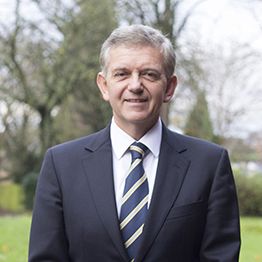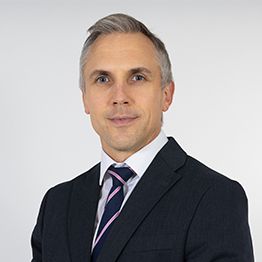Oncology (cancer)
About
The Royal Orthopaedic Hospital is the leading centre for orthopaedic oncology in the world. Our team specialises in the diagnosis and treatment of benign and malignant tumours of bone and soft tissues.
Soft tissue sarcomas are a group of rare cancers affecting the tissues that connect, support and surround other body structures and organs.
Tissues that can be affected by soft tissue sarcomas include fat, muscle, blood vessels, deep skin tissues, tendons and ligaments. Bone sarcomas are covered separately. Soft tissue sarcomas can develop in almost any part of the body, including the legs, arms and tummy (abdomen).
Symptoms of soft tissue sarcomas
Soft tissue sarcomas often have no obvious symptoms in the early stages.
They can cause symptoms as they get bigger or spread. The symptoms depend on where the cancer develops.
For example:
- swelling under the skin may cause a painless lump that cannot easily be moved around and gets bigger over time
- swelling in the tummy (abdomen) may cause abdominal pain, a persistent feeling of fullness and constipation
- swelling near the lungs may cause a cough or breathlessness
Types of soft tissue sarcoma
There are many different types of soft tissue sarcoma, depending on where in the body it develops. Examples include:
- leiomyosarcoma – develops in muscle tissue
- liposarcoma – develops in fat tissue
- angiosarcoma – develops in the cells of the blood or lymph glands
- gastrointestinal stromal tumours (GISTs) – develop in the connective tissues that support the organs of the digestive system
Causes of soft tissue sarcomas
In most cases there are no obvious reasons why a soft tissue sarcoma develops, but there are a number of things known to increase the risk, including:
- age – soft tissue sarcomas can happen at any age, including in children, but they're more common in middle-aged or elderly people and your risk increases as you get older
- certain genetic conditions, such as neurofibromatosis type 1and retinoblastoma, are associated with an increased risk of soft tissue sarcomas
- previous radiotherapy– some people who have previously had radiotherapy for another type of cancer develop a soft tissue sarcoma, often many years later
- exposure to certain chemicals, including vinyl chloride, dioxins and phenoxyacetic herbicides, has been associated with increased rates of soft tissue sarcoma
Kaposi's sarcoma is a very rare sarcoma caused by the human herpesvirus 8 (HHV-8) infecting someone with a weakened immune system (such as people with HIV).
Diagnosing soft tissue sarcomas
If your GP feels there's a possibility you have soft tissue sarcoma, they'll refer you for a number of tests.
A diagnosis of a soft tissue sarcoma will usually be made by a hospital specialist and will be based on your symptoms, a physical examination, and the results of:
- scans – an ultrasound scan is usually the first test done and is fairly simple and quick. Further scans, such as an MRI scan, may be done later
- a biopsy – where a sample of suspected cancerous tissue is removed, using a needle or during an operation, so it can be analysed in a laboratory
If a diagnosis of soft tissue sarcoma is confirmed, these and further tests will also help determine how likely the cancer is to spread (known as the "grade"), and whether or how far the cancer has spread (known as the "stage").
Treatments for soft tissue sarcomas
People with a soft tissue sarcoma are cared for by a team of doctors and nurses at specialist centres who will help to plan the most appropriate treatment.
The best treatment depends on things such as where the cancer developed, the type of sarcoma it is, how far it has spread, your age and your general health.
The main treatments are:
- surgery to remove any tumour
- radiotherapy – where high-energy radiation is used to kill cancer cells
- chemotherapy and other medicines to kill the cancer cells
Surgery
Surgery is the main treatment for soft tissue sarcomas that are diagnosed at an early stage.
It usually involves removing the tumour along with a section of surrounding healthy tissue. This helps to ensure no cancer cells are left behind.
Every effort will be made to reduce the impact of surgery on the appearance and function of the affected body part. But there is a chance you'll have some difficulty using the affected body part after surgery and sometimes further surgery may be needed to repair it.
In a very small number of cases, there may be no option but to amputate the part of the body where the cancer is located, such as part of the leg.
Radiotherapy
In some sarcomas, radiotherapy is used before or after surgery to improve the chance of cure. This is done using a machine that directs beams of radiation at a small treatment area.
Radiotherapy alone may also sometimes be used when surgery is not possible, to reduce symptoms caused by the sarcoma or slow its progression.
Common side effects of radiotherapy include sore skin, tiredness and hair loss in the treatment area. These tend to get better within a few days or weeks of treatment finishing.
Chemotherapy
Chemotherapy is very occasionally used before surgery to shrink a tumour and make it easier to remove. This involves being given cancer-killing medicine directly into a vein (intravenously).
Chemotherapy may also be used alone or alongside radiotherapy for soft tissue sarcomas that can't be surgically removed.
Common side effects of chemotherapy include feeling tired and weak all the time, feeling and being sick, and hair loss. These can be unpleasant but are usually temporary.
There are also other types of anti-cancer medicines used to treat sarcoma that may be given as injections or tablets.
Outlook for soft tissue sarcomas
The outlook for a soft tissue sarcoma mostly depends on the type of sarcoma it is, how likely it is to spread (the grade) and how far it has already spread (the stage) by the time it's diagnosed.
If it's detected at an early stage or is a low-grade tumour and it can be removed during surgery, a cure is usually possible. However, larger, high-grade tumours have a greater risk of coming back or spreading.
After initial treatment, you'll need regular check-ups to look for any signs the cancer has come back. You may also need physiotherapy and occupational therapy to help you manage any physical difficulties resulting from surgery.
A cure is not usually possible if a soft tissue sarcoma is only detected when it has already spread to other parts of the body, although treatment can help slow the spread of the cancer and control your symptoms.
Primary bone cancer is a rare type of cancer that begins in the bones. Around 550 new cases are diagnosed each year in the UK.
This is a separate condition from secondary bone cancer, which is cancer that spreads to the bones after developing in another part of the body.
Signs and symptoms of bone cancer
Bone cancer can affect any bone, but most cases develop in the long bones of the legs or upper arms.
The main symptoms include:
- persistent bone pain that gets worse over time and continues into the night
- swelling and redness (inflammation) over a bone, which can make movement difficult if the affected bone is near a joint
- a noticeable lump over a bone
- a weak bone that breaks (fractures) more easily than normal
- problems moving around – for example, walking with a limp
If you or your child are experiencing persistent, severe or worsening bone pain, visit your GP.
While it's highly unlikely to be the result of bone cancer, it does require further investigation.
Read more about the symptoms of bone cancer.
Types of bone cancer
Some of the main types of bone cancer are:
- osteosarcoma – the most common type, which mostly affects children and young adults under 20
- Ewing sarcoma– which most commonly affects people aged between 10 and 20
- chondrosarcoma – which tends to affect adults aged over 40
Young people can be affected because the rapid growth spurts that occur during puberty may make bone tumours develop.
The above types of bone cancer affect different types of cell. The treatment and outlook will depend on the type of bone cancer you have.
What causes bone cancer
In most cases, it's not known why a person develops bone cancer.
You're more at risk of developing it if you:
- have had previous exposure to radiationduring radiotherapy
- have a condition known as Paget's disease of the bone– however, only a very small number of people with Paget's disease will actually develop bone cancer
- have a rare genetic condition called Li-Fraumeni syndrome – people with this condition have a faulty version of a gene that normally helps stop the growth of cancerous cells
Read more about the causes of bone cancer.
How bone cancer is treated
Treatment for bone cancer depends on the type of bone cancer you have and how far it has spread.
Most people have a combination of:
- surgery to remove the section of cancerous bone – it's often possible to reconstruct or replace the bone that's been removed, but amputationis sometimes necessary
- chemotherapy– treatment with powerful cancer-killing medicine
- radiotherapy– where radiation is used to destroy cancerous cells
In some cases of osteosarcoma, a medicine called mifamurtide may also be recommended.
Read more about treating bone cancer.
Outlook
The outlook for bone cancer depends on factors such as your age, the type of bone cancer you have, how far the cancer has spread (the stage), and how likely it is to spread further (the grade).
Generally, bone cancer is much easier to cure in otherwise healthy people whose cancer hasn't spread.
Overall, around 6 in every 10 people with bone cancer will live for at least 5 years from the time of their diagnosis, and many of these may be cured completely.
Birmingham Sarcoma Service
The Royal Orthopaedic Hospital NHS Foundation Trust, University Hospitals Birmingham NHS Foundation Trust and Birmingham Women’s and Children’s Hospital NHS Foundation Trust together run a world class sarcoma service, providing the very highest quality of care to patients with sarcoma. The three Trusts make up The Birmingham Sarcoma Service (BSS), which provides specialist care for patients both regionally and nationally with all types and stages of soft tissue and bone sarcoma.

Sarcoma UK
Sarcoma UK is a charity. Their mission is to ensure everyone affected by sarcoma receives the best treatment, care, information and support. Their website is full of fantastic resources:

The Bone Cancer Research Trust
The Bone Cancer Research Trust is a charity that offers hope to people impacted by primary bone cancer (bone sarcoma). It is uniquely placed to make a difference through research, information, awareness, and support.
For anyone affected by the disease, their high-quality information and support service means that no-one should have to face bone cancer alone:
Information about conditions, treatments and more








